Is your loved one suffering from bedsores due to neglect or abuse at a Monroe nursing home or other long-term care facility? You are not alone. At Benton & Benton we understand the pain and frustration that families go through when nursing homes don’t provide adequate care for their loved ones. Our team of dedicated nursing home abuse attorneys is here to advocate for your rights and ensure that those responsible are held accountable.
What are Bedsores?
Bedsores, also known as pressure ulcers or decubitus ulcers, are injuries to the skin and underlying tissue that result from prolonged pressure on specific areas of the skin. They typically develop on areas of the body that bear weight, such as heels, hips, and tailbone. Without proper treatment, bedsores can cause serious complications, including infection and tissue damage.
Bedsores may present as a blister or open ulcer. They are painful, debilitating, and depending on the stage of the sore, may require surgery or other aggressive treatment.
Why are Bedsores Dangerous?
Bedsores can lead to sepsis, amputation, and even death if left untreated. Individuals with limited mobility, such as the elderly or those with disabilities, are particularly susceptible to developing bedsores. When left untreated, bedsores can progress rapidly, causing significant pain and suffering.
Who is Susceptible to Bedsores?
Anyone who spends extended periods in a stationary position is at risk of developing bedsores. However, certain individuals are more susceptible, including:
- Elderly individuals
- Patients with limited mobility
- Those with underlying health conditions
- Individuals in nursing homes or long-term care facilities
- Patients who use a wheelchair
Causes of Bedsores
Bedsores are primarily caused by prolonged pressure on the skin, often in combination with friction and moisture. Factors that contribute to the development of bedsores may include:
- Poor nutrition and hydration
- Inadequate skincare
- Friction from clothing or bedding
- Medical conditions that affect blood flow such as Diabetes
- Poor facility management
- Lack of training for nursing home staff
- Understaffed facilities
The Stages of Bedsores
Bedsores are classified into four stages, ranging from mild to severe:
- Stage I: The skin is intact but may appear red or discolored.
- Stage II: The skin is broken, forming an open wound or blister.
- Stage III: The wound extends through the skin and into the underlying tissue.
- Stage IV: The wound is deep, extending into muscle and bone.

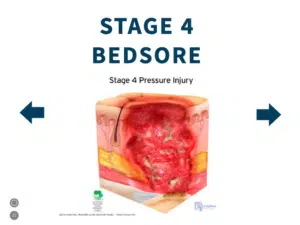
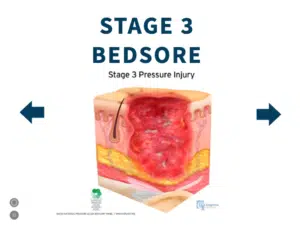
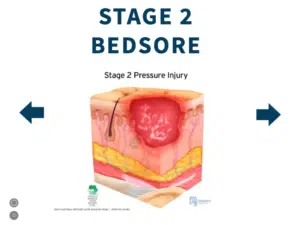
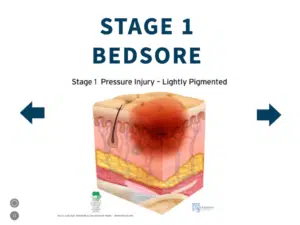
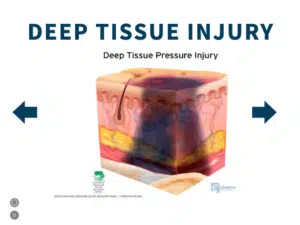
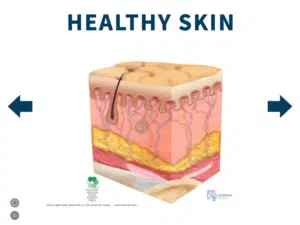
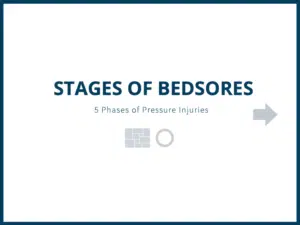
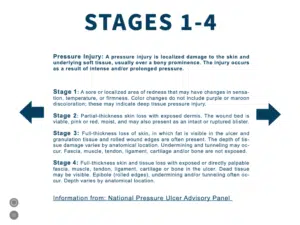
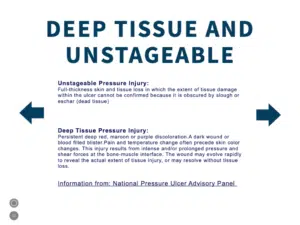
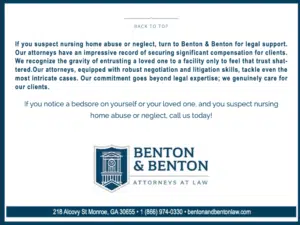
Preventing Bedsores in Nursing Homes: What Should Nurses and Caregivers Be Doing?
Nursing homes and long-term care facilities have a legal duty to prevent bedsores and provide quality care to all residents. Unfortunately, some facilities put profits over resident safety. When this happens, issues such as understaffed facilities, unqualified staff, or a lack of training for staff can occur. When nurses are overworked and underpaid, it can lead to abuse and neglect. If nurses and other staff don’t have enough hours in the day to properly care for patients, this can lead to issues, including bedsores.
Preventative measures that nursing homes should have in place include:
- Regularly repositioning residents to relieve pressure on the skin.
- Providing appropriate support surfaces, such as specialized mattresses or cushions.
- Ensuring proper nutrition and hydration of all residents.
- Maintaining and providing good hygiene and skincare practices for all residents.
- Monitoring residents for signs of skin breakdown.
- Proper staffing.
- Changing soiled clothes quickly.
- Proper training for nurses and caregivers.
- Using the Braden or Norton Scale to determine who might be at risk for bedsores.
Monroe nursing homes should always evaluate residents under The Braden Scale or Norton Scale. Residents who score a 12 or lower on the Braden Scale are considered at an elevated risk of developing a pressure injury. If a resident is high risk, nursing home staff can implement preventative measures to keep bedsores from developing.
What Are Some Signs of Bedsores?
If you suspect that your loved one has been neglected or abused in a Monroe nursing home, it’s important to look for signs of bedsores. Below are some warning signs:
- Red, discolored, or swollen skin
- Open wounds or blisters
- Foul odor
- Signs of infection, such as fever or chills
- Changes in behavior or mood
- Complaints of pain
Not all cases of bedsores are a sign of abuse or neglect, but if a bedsore has developed it should not be dismissed. If nursing home staff fails to properly evaluate, diagnose, or treat a bedsore, this is considered neglect. Nursing homes should have proper guidelines in place to ensure that each resident receives quality care. Any deviations from the standard of care are considered negligent. This may include failures such as improper staffing, scaling a bedsore properly, failure to properly treat a bedsore, or failure to change a resident’s plan of care when a bedsore develops.
Nursing homes and other long-term care facilities must meet the national standard of care when diagnosing and treating bedsores.
Benton & Benton Seeks Justice for Victims
If you believe that neglect or abuse has contributed to the development of bedsores, don’t hesitate to seek legal guidance. Our compassionate team is here to provide support and legal representation every step of the way. Don’t suffer in silence. Contact Benton & Benton today to schedule a free consultation. Our experienced nursing home abuse attorneys are committed to fighting for justice on your family’s behalf. Call us at 866-927-4290 or tell us about your potential case.

 Call Us Now
Call Us Now Email Us Now
Email Us Now
